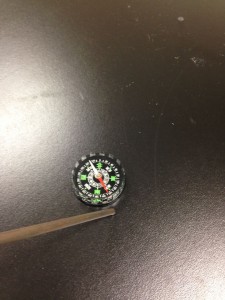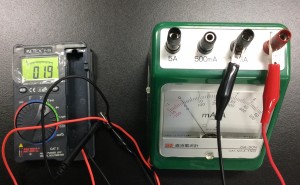Why Does the Weight Move? Discover the Wonders of Electricity and the Secret of Grounding with the “Electrostatic Bell”! (For Middle Schoolers)
Ken Kuwako, Your Science Trainer. Every Day is an Experiment!
Hello, budding scientists and curious minds! I’m Ken Kuwako, and today, we’re diving into an experiment that is deceptively simple yet profoundly insightful. It’s the Electrostatic Bell, a fantastic project created by our very own science club students. If you’re wondering, “What exactly is an Electrostatic Bell?”, take a look at the mesmerizing video below!
This experiment is much more than just a bell ringing back and forth. It challenges us to dig deep into the fundamental question: “Why does the pendulum bob swing?” The Electrostatic Bell provides a spectacular opportunity to comprehensively learn about the core principles of electricity, covering everything from the basics of static electricity and charge transfer to the fascinating concepts of dielectric polarization and the critical role of grounding (earthing). Let’s unlock the secrets of this captivating mechanism!
The Electrostatic Bell Experiment: A Deep Dive into Static Charge
The Electrostatic Bell experiment is highly effective for visually understanding the fundamental properties of static electricity, particularly charge transfer, electrostatic force (Coulomb’s Law), and dielectric polarization. Let’s break down the exciting mechanism that makes the pendulum bob swing busily from side to side!
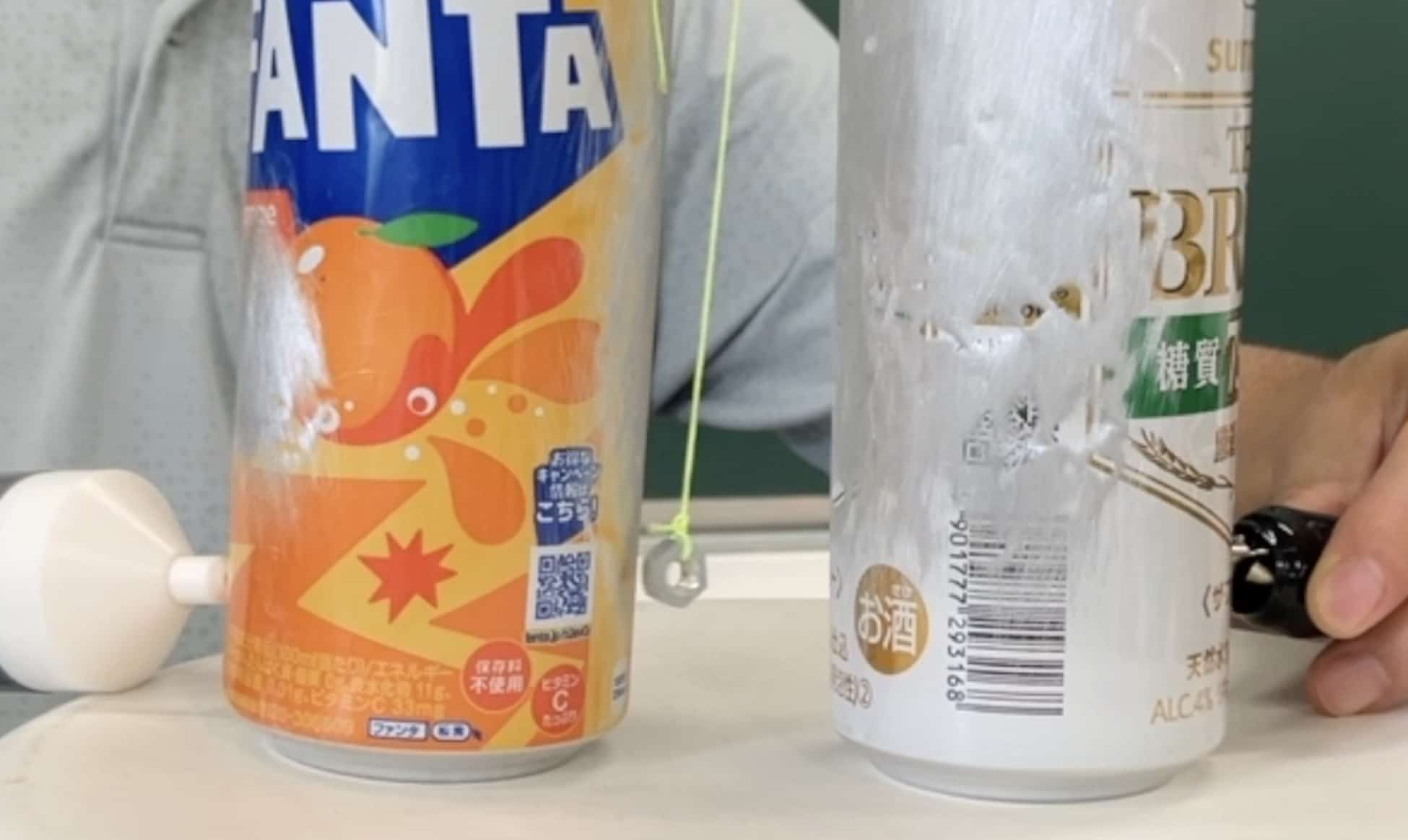
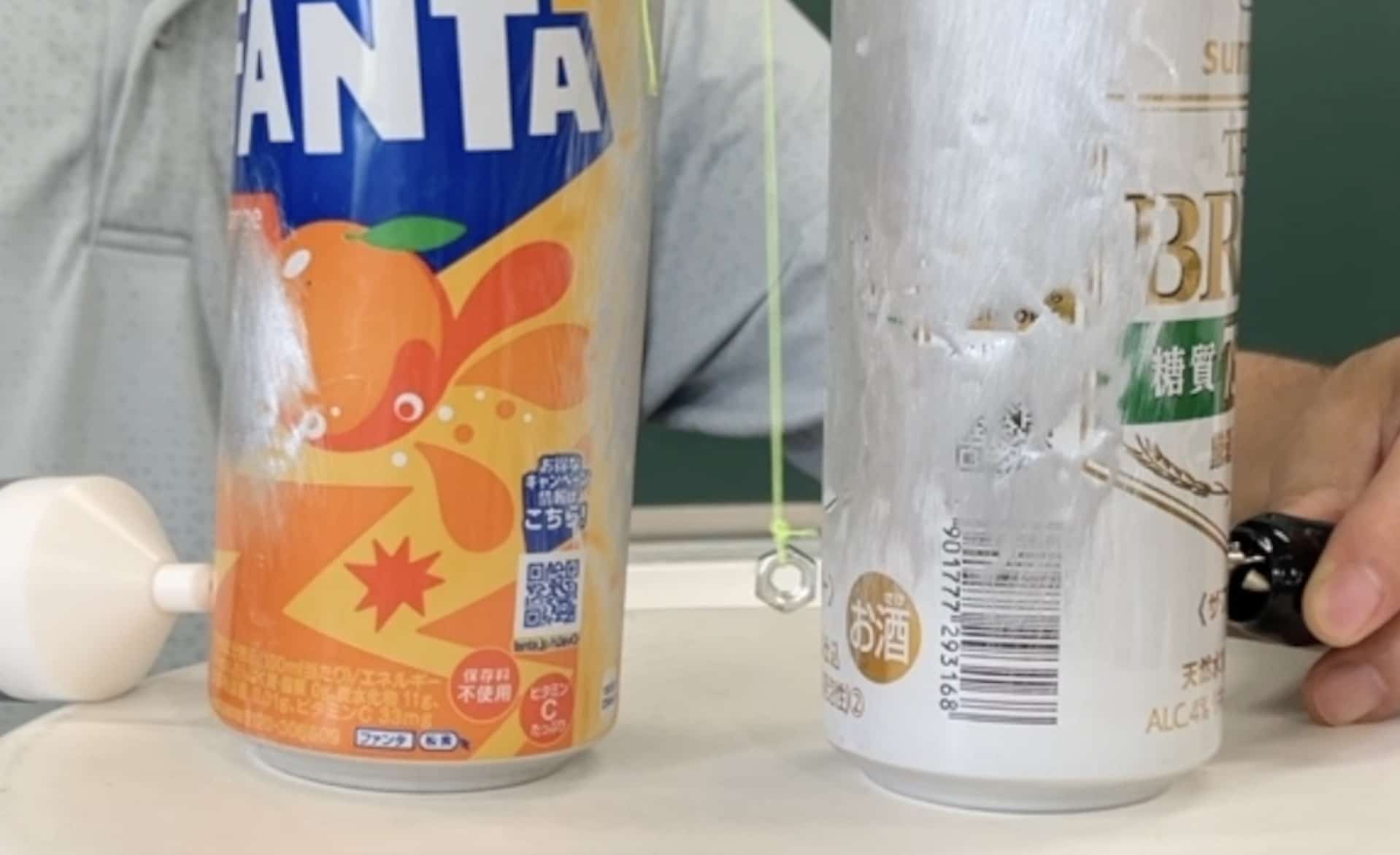
1. Perfecting Your Experiment Setup!
First, let’s gather everything you need to make sure your experiment runs smoothly and safely.
Materials You’ll Need:
- Two Metal Cans (We’ll call them A and B. They should be roughly the same size; aluminum soda cans work great and are easy to find.)
- A Pendulum Bob (Ideally light and highly conductive. We used a metal nut for our demonstration. The string should be insulating, like nylon.)
- Chopsticks or a Rod (To suspend the pendulum between the cans.)
- Static Electricity Generator (A charging gun, or a simple PVC pipe/acrylic sheet rubbed with fur or tissue paper to generate static charge.)
- Connecting Wire or Alligator Clip Cord (To ground Can B.)
Setup Instructions:
- Install the Pendulum: Tie the pendulum bob to the chopsticks/rod and suspend it.
- Arrange the Cans: Place the chopsticks/rod across the tops of Cans A and B so the bob hangs freely between them.
- Connect the Ground (Earth): Attach the wire or clip cord to Can B, and connect the other end to a reliable ground source, such as a metal desk, the floor, or ideally, a metal pipe or building frame. This ensures an effective earth connection!
2. The Experiment Process and the Physics Behind “Why?”
Now, the moment of truth! Let’s start the experiment. As we go through the steps, we will simultaneously explain the underlying physics—this is where the real learning happens!
Charging Can A with Static Electricity:
Procedure: Bring your charging device (let’s assume it’s negatively charged, like a PVC pipe rubbed with cloth) near Can A. Negative electrons will jump from the charging device to Can A, causing Can A to become negatively charged.
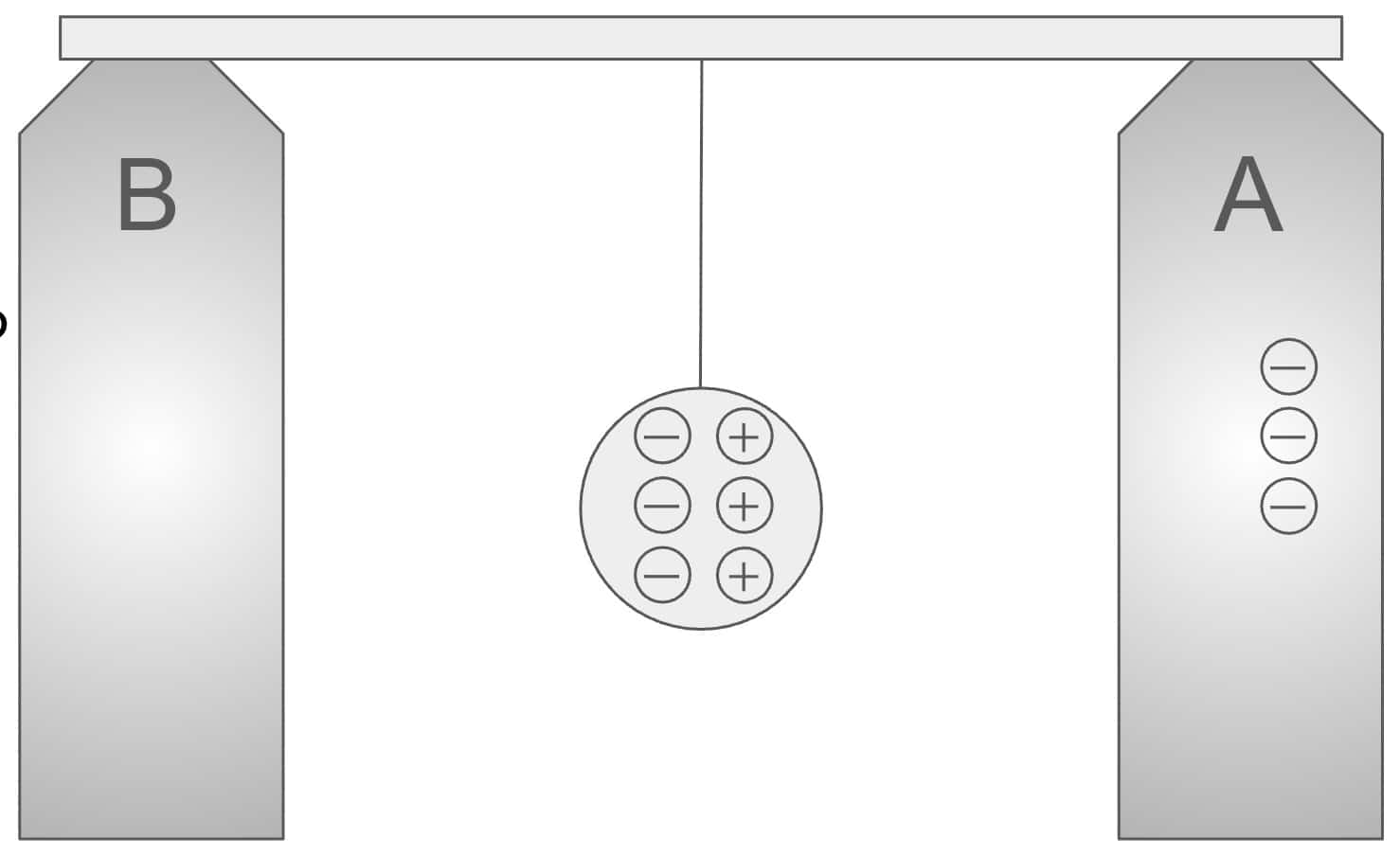
The Pendulum is Attracted to Can A!
Procedure: As the uncharged pendulum bob approaches the statically charged Can A, the bob is pulled toward it.
This is the perfect moment to introduce the concept of Dielectric Polarization (or electrostatic induction for conductors)! Since Can A is negative, the free electrons inside the metal pendulum bob are repelled and move to the side farthest from Can A (the side facing Can B). As a result, the side of the bob closest to Can A develops a concentrated positive charge, while the side closest to Can B develops a concentrated negative charge. This separation of charge is known as “Dielectric Polarization” (or simply “Induction”).
Remember the rule: “Opposite charges attract!” A strong attractive force (electrostatic force) forms between the negative charge on Can A and the newly concentrated positive charge on the bob’s A-side. This force pulls the pendulum bob straight into Can A.
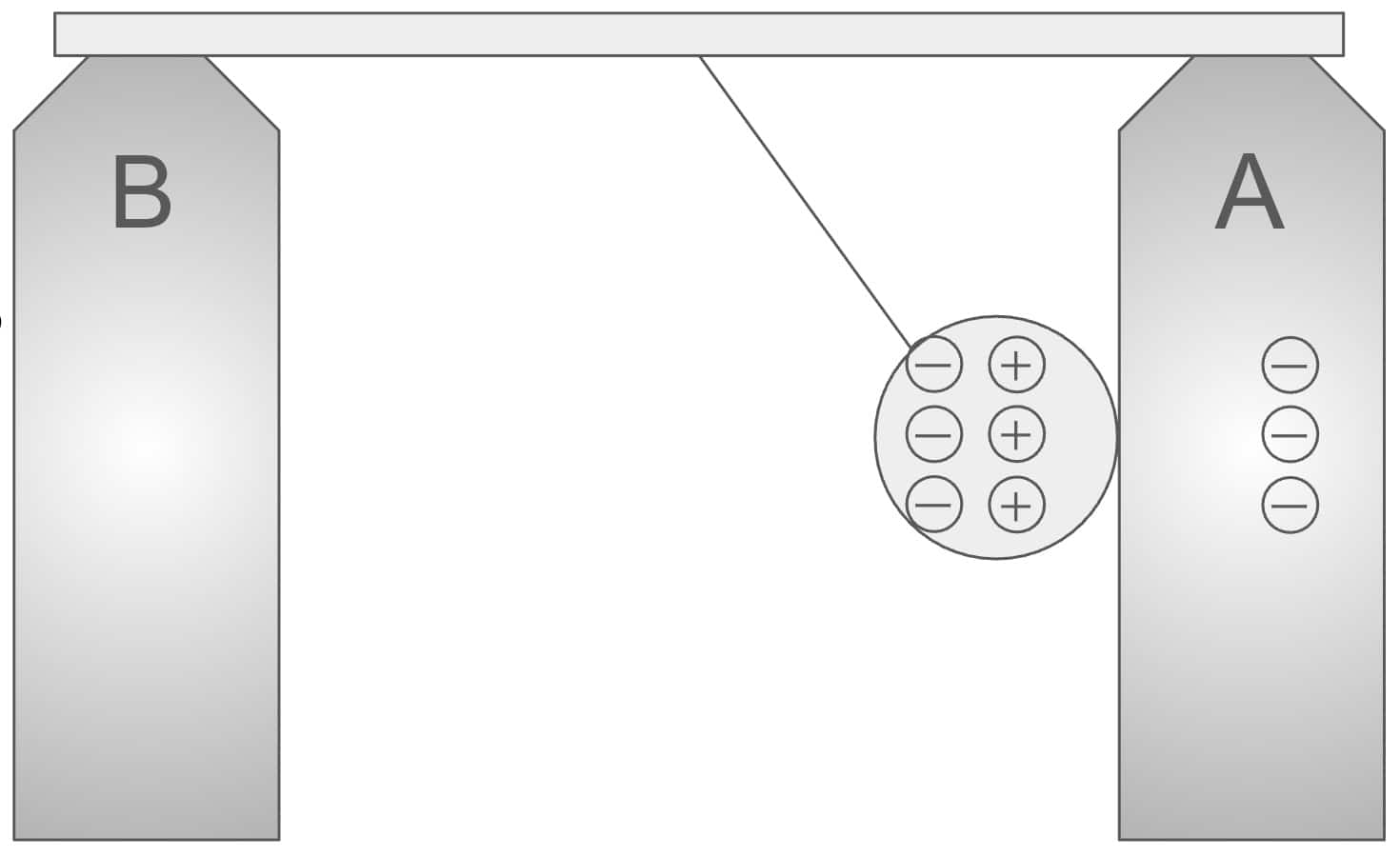
The Pendulum Jumps Away from Can A!
Procedure: As soon as the bob touches Can A, it is immediately repelled and swings away.
Key Teaching Point:
“Why does it suddenly jump away after being attracted?”
When the bob contacts Can A, negative electrons transfer from the already-negative Can A to the bob. This is charge transfer by conduction. Consequently, the pendulum bob itself becomes negatively charged.
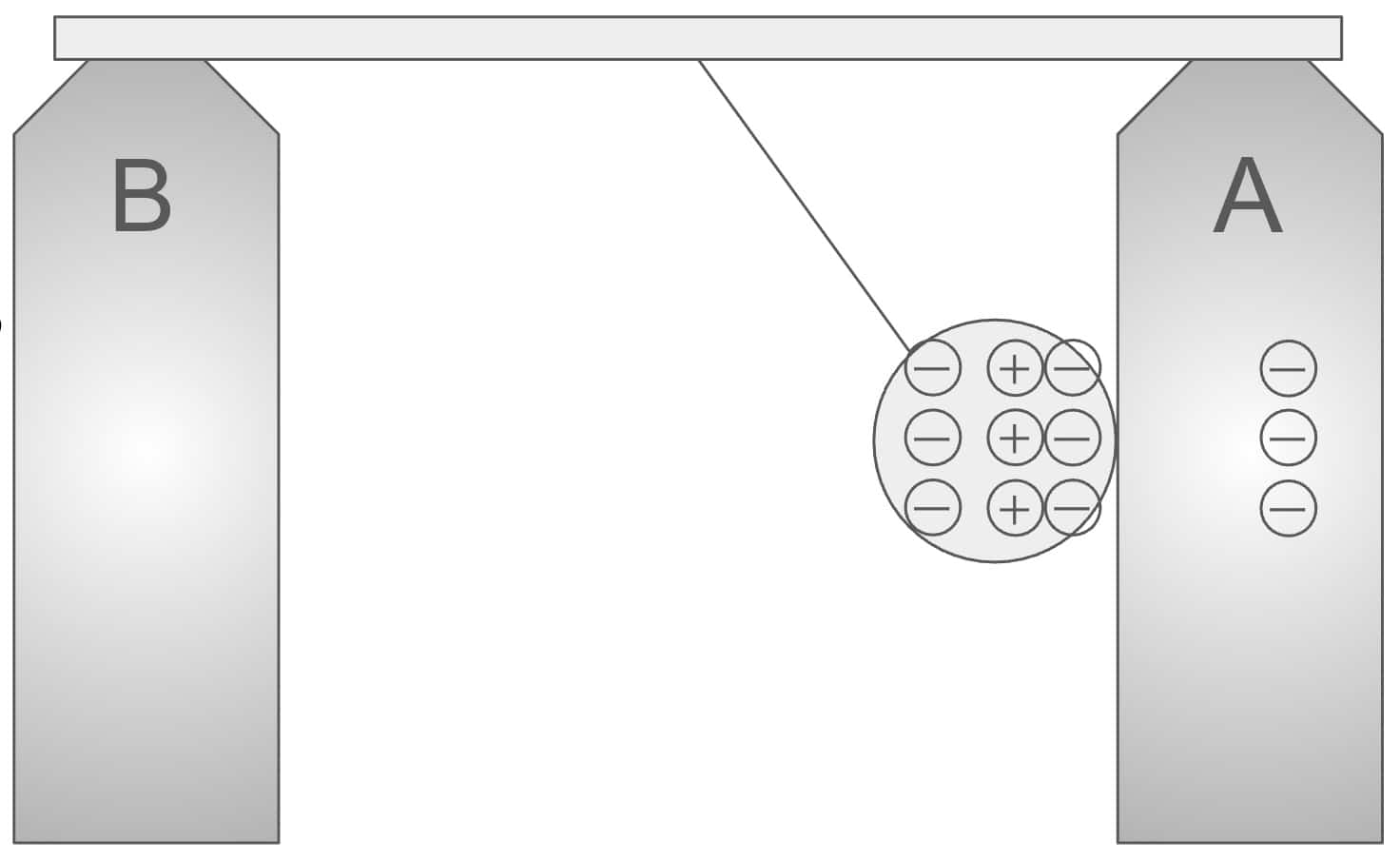
“Like charges repel!” Since both the pendulum bob and Can A are now negatively charged, a powerful repulsive force (electrostatic force) acts between them. This force pushes the bob away from Can A and it begins its journey toward Can B.
The Pendulum Approaches Can B and Discharges!
Procedure: The negatively charged pendulum bob swings towards the grounded Can B and makes contact.
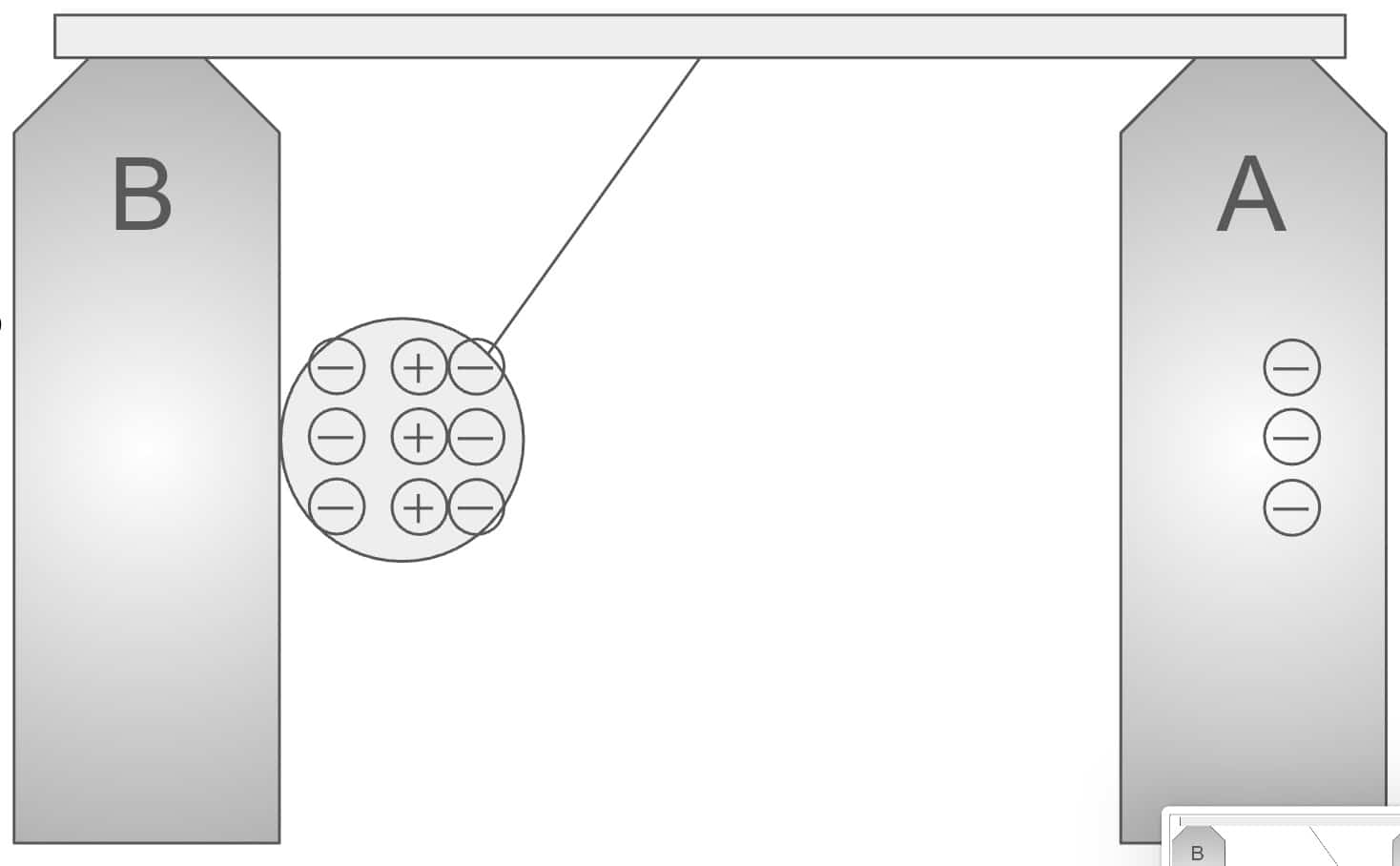
“What does it mean for Can B to be grounded?” Grounding, or earthing, means connecting a body to the Earth. You can think of the Earth as a massive, infinite reservoir of charge.
“Since the pendulum bob is negatively charged, what happens when it touches the ground?” The excess negative electrons on the bob’s surface see a path to the Earth, where they can spread out. They flow from the bob, through Can B and the wire, and into the Earth (ground). This process effectively ‘drains’ the excess charge, and the pendulum bob returns to a neutral (uncharged) state.
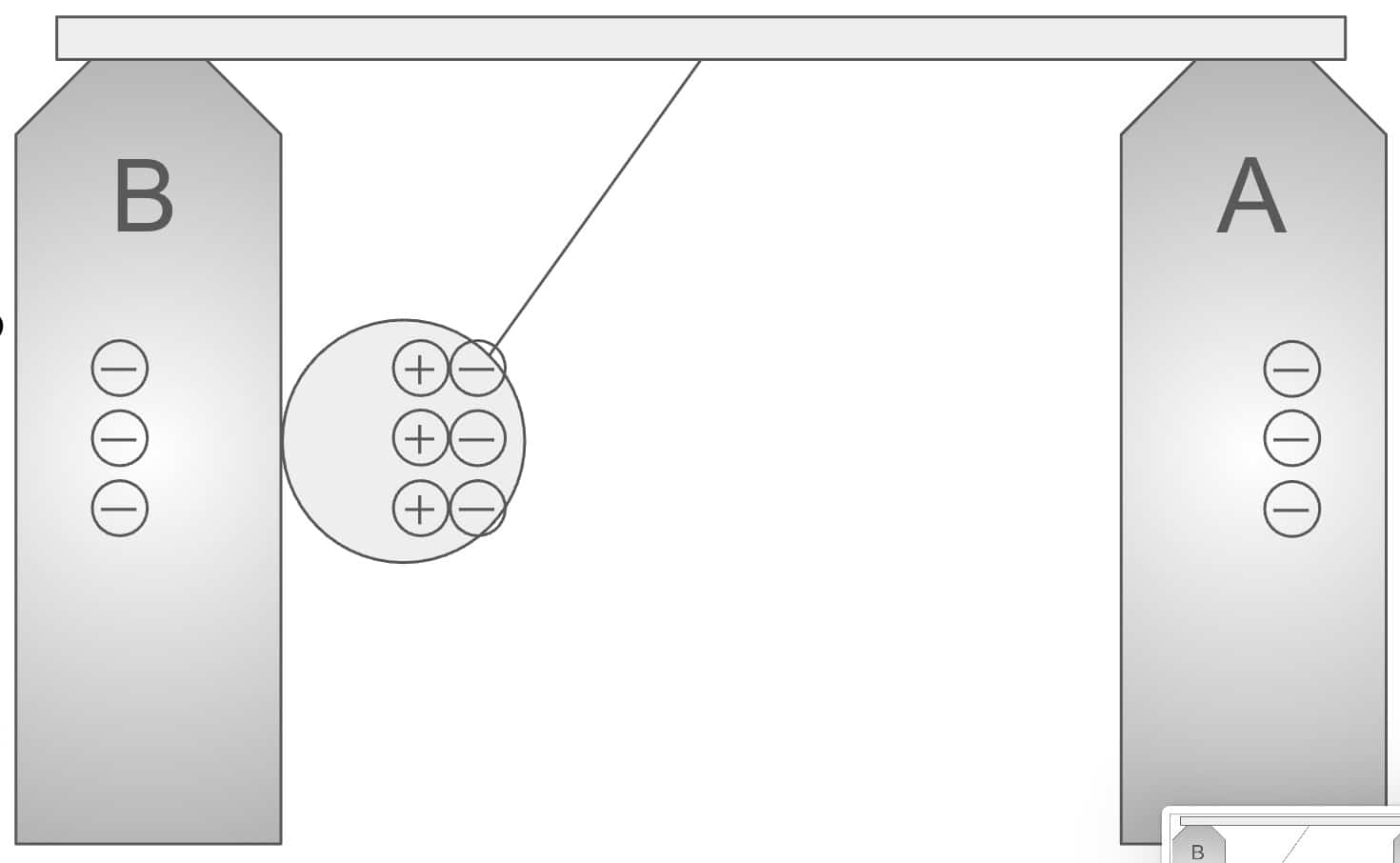
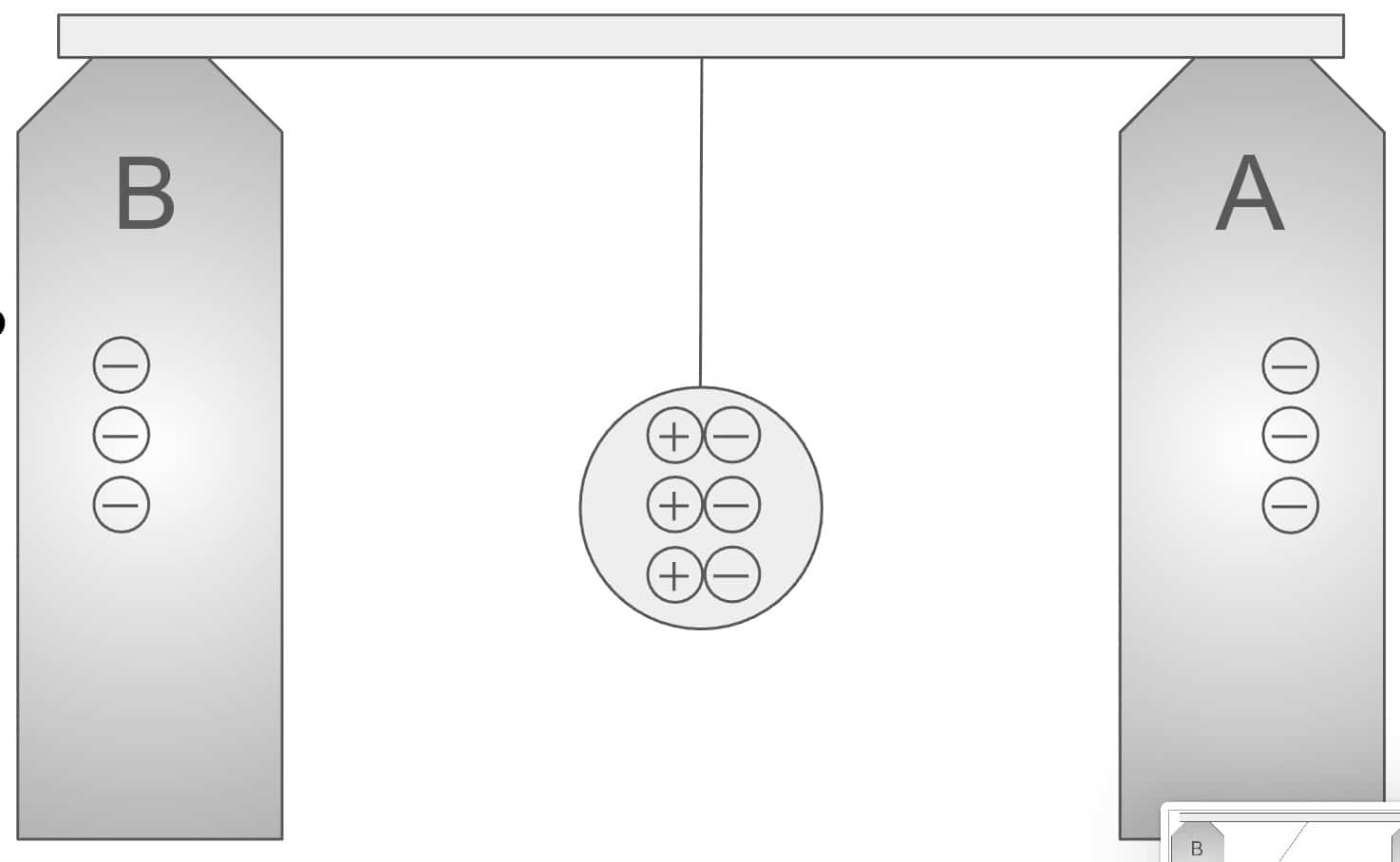
The Pendulum Swings Away from Can B… and the Cycle Repeats!
Procedure: Having transferred its electrons and returned to a neutral state, the pendulum bob swings away from Can B. It is now uncharged, which means it will immediately be attracted back to the highly charged Can A, initiating the whole process again! As the bob strikes the cans repeatedly, it creates a satisfying “click, click…” sound—this is your successful Electrostatic Bell!
Key Scientific Concepts: Deeper Learning from the Bell
Through this captivating experiment, students gain practical, hands-on knowledge of several crucial scientific principles:
- Types and Properties of Electric Charge: The fundamental rule that opposite charges attract and like charges repel.
- Electrostatic Force (Coulomb’s Law): Understanding the strength and direction of the force acting between charged objects.
- Conductors vs. Insulators: The distinct roles of conductors (the metal cans and bob), where charges can move freely, and insulators (the pendulum string), which restrict charge movement.
- Dielectric Polarization (or Electrostatic Induction): The phenomenon where a charged object causes a temporary separation of charge within a neutral conductor, drawing it in.
- The Role of Grounding (Earthing): A mechanism that allows excess charge to safely dissipate into the Earth, returning objects to a neutral state. Discussing real-world applications, such as lightning rods and appliance grounding wires, will significantly deepen comprehension!
The Electrostatic Bell experiment offers a fantastic chance to move beyond a simple visual phenomenon and truly grasp the fundamental laws and principles of electricity that govern our world.
You can see an historical explanation of the Electrostatic Bell using a Van de Graaff generator here:
Contact and Requests
We want to bring the wonders and excitement of science closer to you! Search around the blog for fun, easy science experiments you can do at home and clear explanations of the underlying principles.
- For more information about the operator, Ken Kuwako, click here.
- For various requests (writing, lectures, workshops, TV supervision, appearances, etc.), click here.
- Article updates are available on X!
![]() Science Topics Channel is where we share experiment videos!
Science Topics Channel is where we share experiment videos!

